Among the places of Gustav Klimt ’s heart was certainly the Attersee lake in the Salzkammergut: in fact, the celebrated Viennese painter spent the summer months there from 1900 to 1916 in the company of Emilie Flöge, his muse, friend and perhaps more, and the latter’s family to whom he was related, since his brother Ernst had married one of Emilie’s sisters. This is evidenced by the many shots and paintings set right here. Gustav and Emilie spent their days boating on the crystal-clear waters of the lake or strolling through the small villages overlooking the Attersee, and it was here that the painter drew inspiration for many of his landscape paintings, featuring views, lake vistas, and houses in the surrounding area. He would take his sketchbook with him and then create those beautiful vistas on the canvas and capture extraordinarily the blue and green hues of the lake, with all its varied shades. Among the most famous paintings depicting the lake and its surroundings areKammer Castle on Lake Attersee, a very atmospheric place on the lakeshore and much loved by Klimt, so much so that he depicted it in several of his paintings, Kammer Castle Avenue, Kammer Castle Park, Litzlberg am Attersee, Houses in Unterach, Forest Ranger’s House in Weissenbach am Attersee (where he spent his last summer stays).
To pay tribute to the great artist and follow in his footsteps, a true thematic trail along the shores of the lake was devised in 2003; since 2012, the Gustav Klimt Center in Kammer-Schörfling, not far from the Kammer Castle Boulevard, has also been open to the public, while the Klimt Garden located in the vicinity of the museum dates back to 2019. One thus has the opportunity to retrace Klimt’s favorite places, which inspired him to create splendid landscape masterpieces (more than forty-five of his fifty best-known landscape paintings), by walking along the dedicated path, visiting the Klimt Center, or sailing on the Attersee.
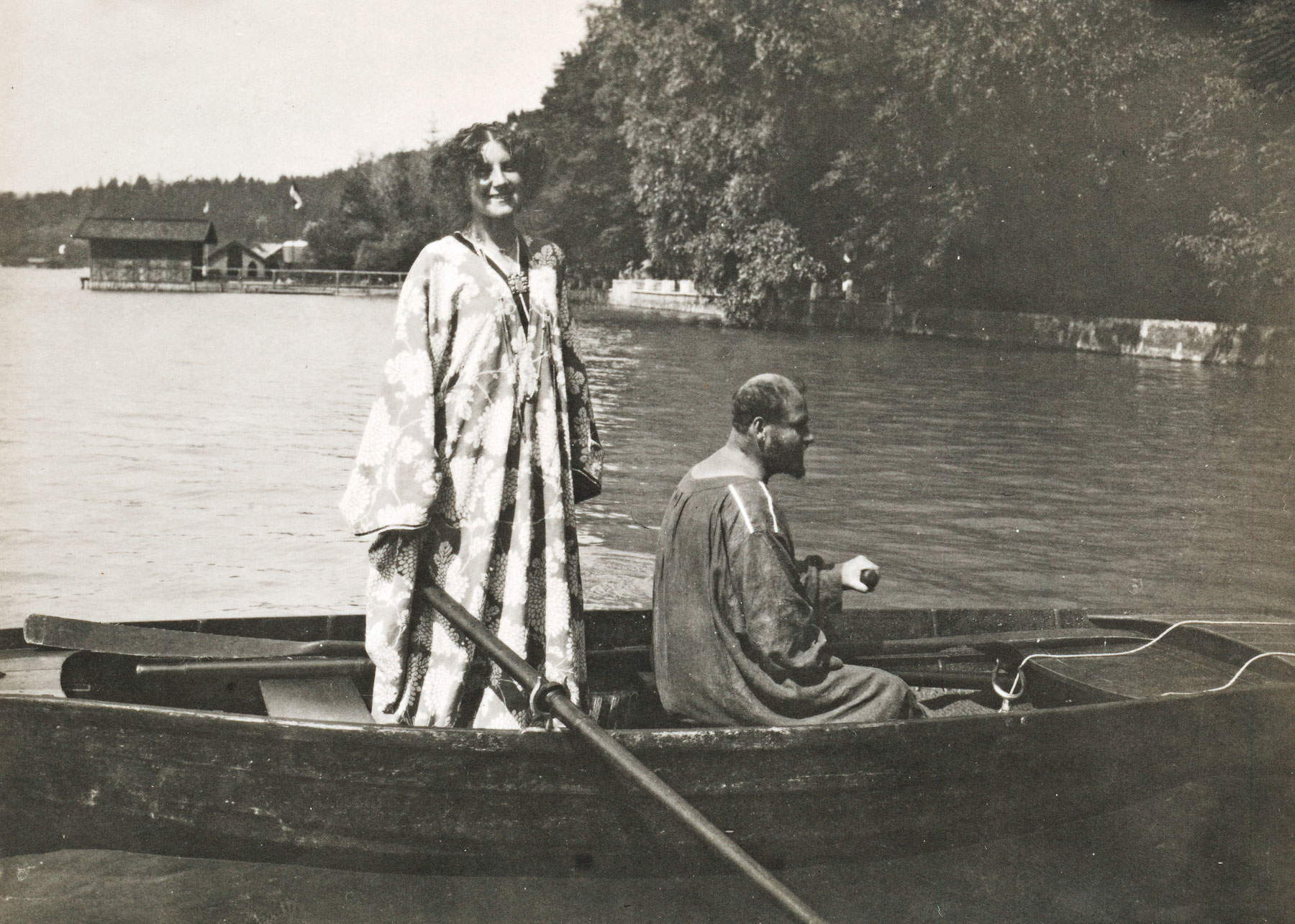 |
| Emilie Flöge and Gustav Klimt photographed by Emma Bacher (1909) ©Klimt Foundation, Vienna |
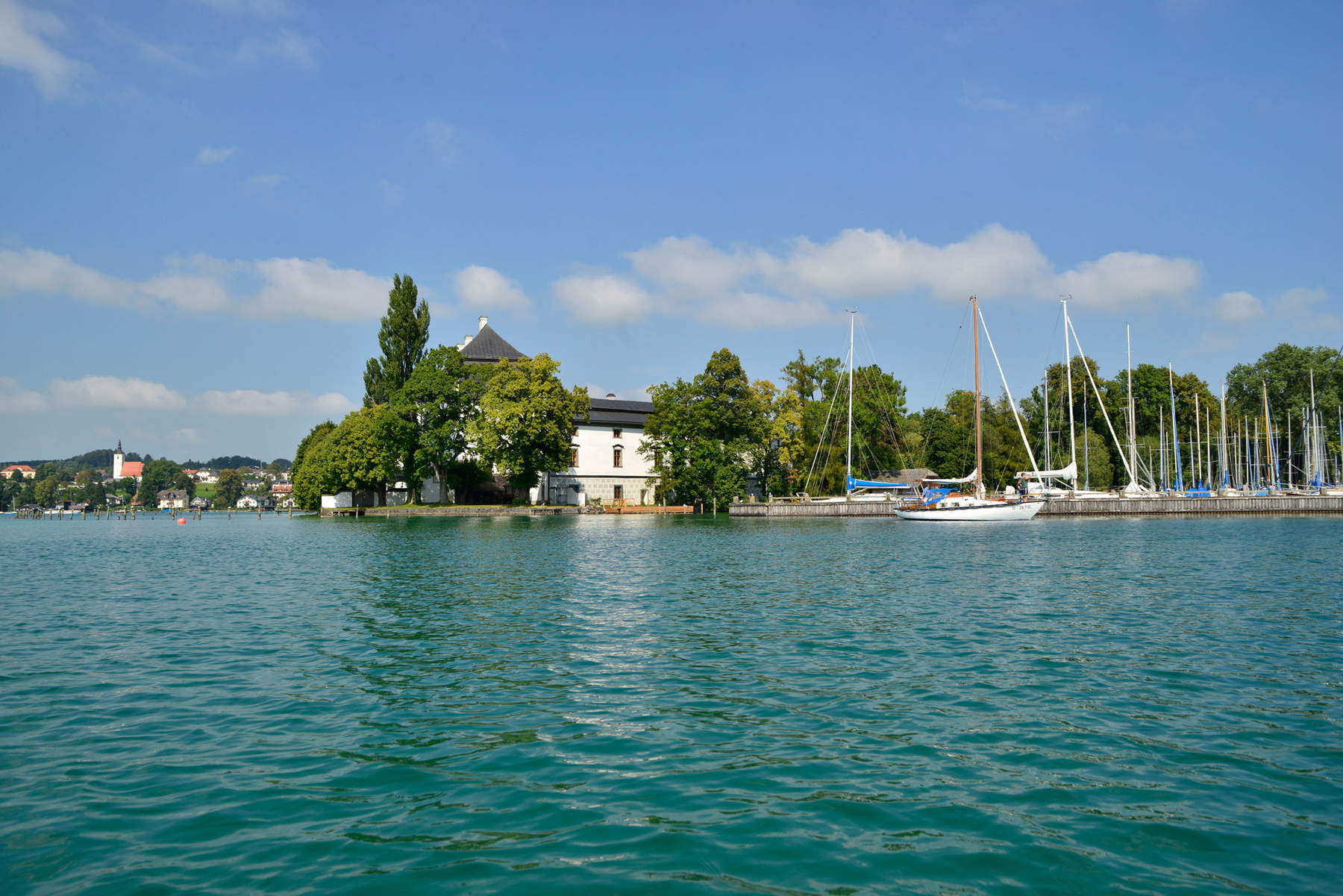 |
| Attersee © �?sterreich Werbung. Ph.Credit Reinhold Leitner |
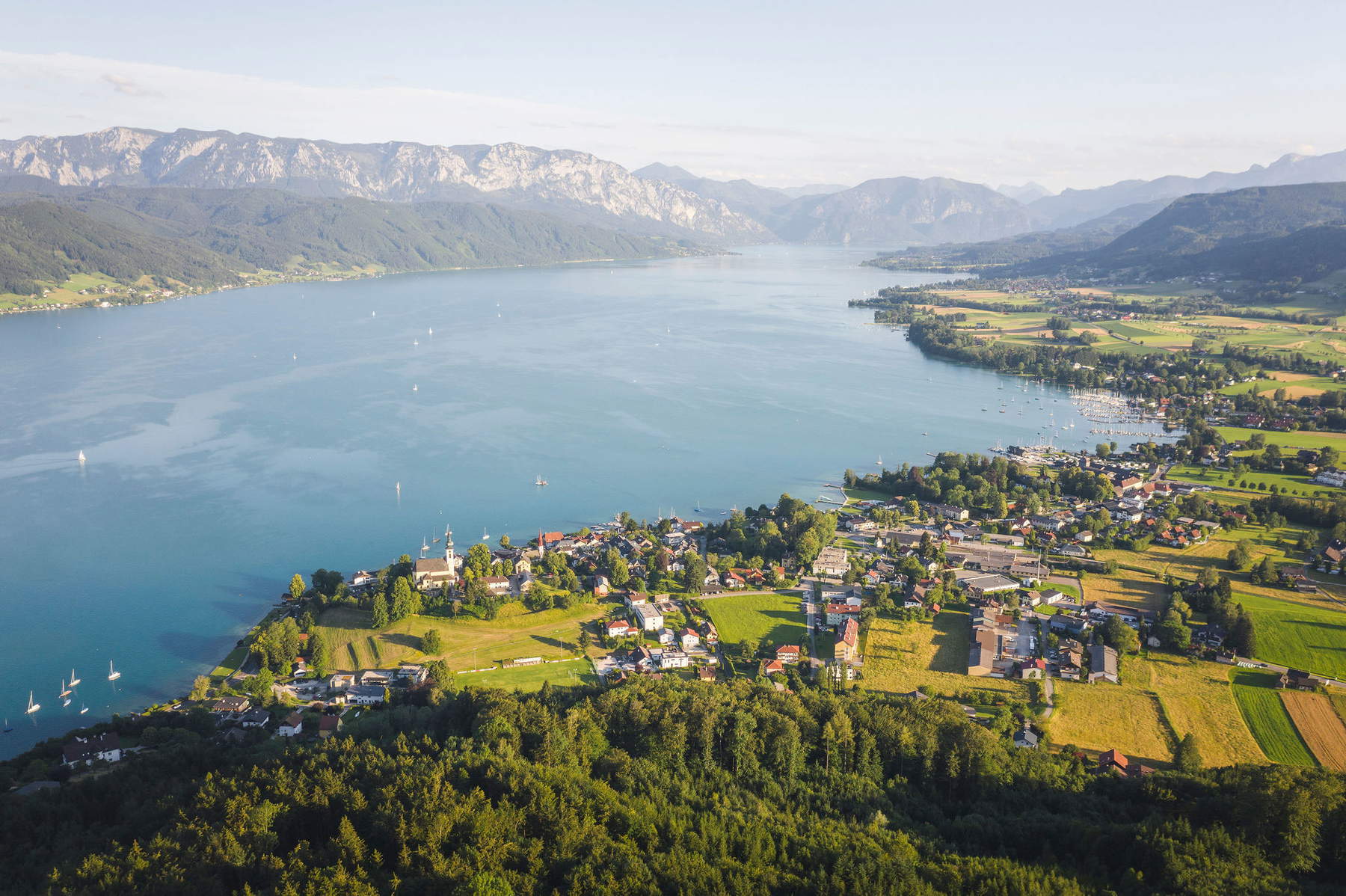 |
| Attersee Region - Attergau © TVB Attersee Attergau. Ph.Credit Moritz Ablinger |
The Salzkammergut derives its name from Salz (salt in German), recalling the millennia-old salt mining in the region, and Kammergut, meaning the property of a 15th-century ruler. The region straddles three regions of Austria: it includes Ausseerland in Styria, parts of Flachgau in Salzburg, and the district of Gmunden in Upper Austria. The variety of landscapes make this region one of the most beautiful in Austria: it ranges in fact from lakes to mountains, and in addition to lots of nature with parks, panoramic views and even a platform for breathtaking adrenaline-pumping views, the Salzkammergut offers castles, churches, monasteries, museums, galleries, caves and much more, although the predominant element is nature. Part of the Salzkammergut are Attersee-Attergau (a paradise for bathers and divers),Ausseerland (home to major events, including the Festival of Daffodils), Bad Ischl (a famous spa resort), Dachstein-Salzkammergut (since 1997, the Hallstatt and Dachstein massif area has been a World Heritage Site byUnesco thanks to the salt mines, an activity that began in prehistoric times), Fuschlseeregion (ideal for fishing and racing cycling enthusiasts), Mondsee-Irrsee (famous bathing lakes), Traunsee-Almtal (ideal for water sports enthusiasts, especially sailing) and Wolfgangsee (holiday fun).
It was the Habsburgs who made this area of Austria a successful destination: they loved to spend their summer vacations in the mountains of the Salzkammergut; Viennese high society began to imitate them and thus headed for these valleys and lakes, especially the areas of Bad Ischl, Bad Aussee, Bad Goisern, and Gosausee. Thanks to alliances and kinship ties that extended throughout Europe through marriages, the Salzkammergut region soon became a popular destination for high society and the bourgeoisie. Art also contributed to this spread, through the presence of depictions of these landscapes in paintings made by famous landscape painters of the Biedermeier period and visible in the salons of Viennese, Parisian and Berlin palaces.
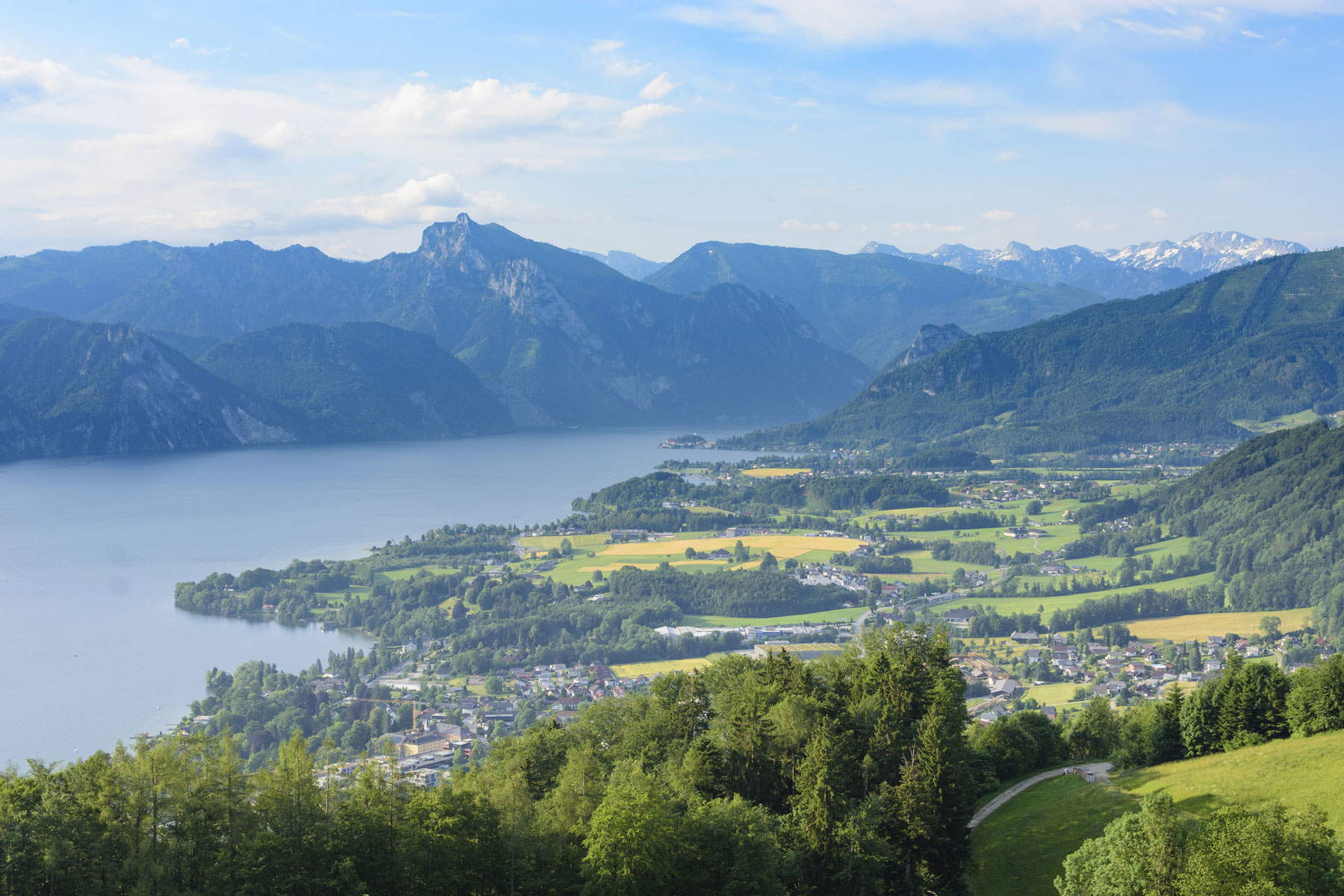 |
| Altmuenster on the Traunsee in the Salzkammergut © �?sterreich Werbung Ph.Credit Volker Preusser |
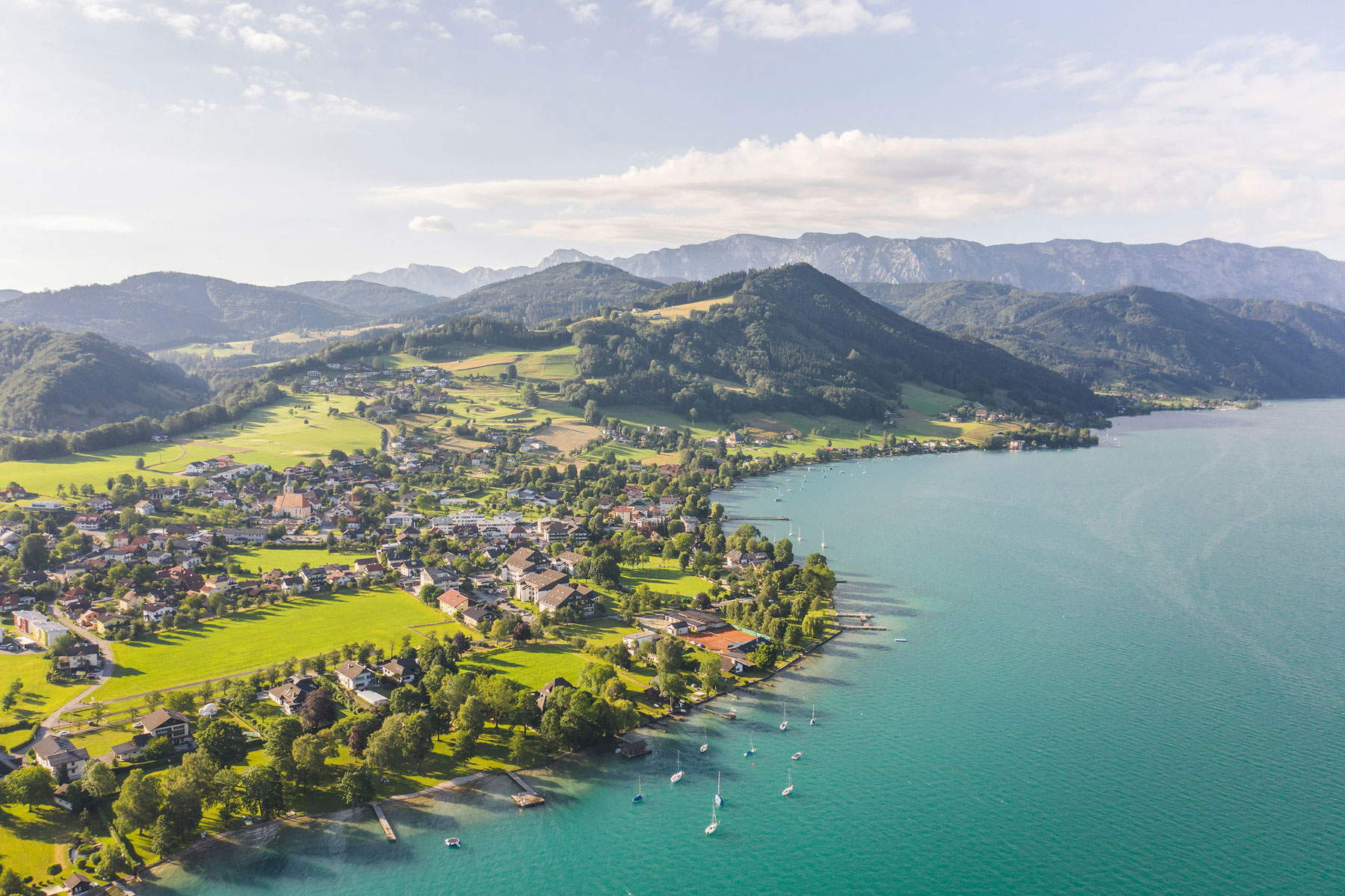 |
| Weyregg on the Attersee © TVB Attersee Attergau. Ph.Credit Moritz Ablinger |
The term Biedermeier originally referred to a character invented by two Swabian poets in the early decades of the nineteenth century: Bieder and Meier were two very common surnames and it was like saying “any good Guy.” The term later became synonymous with the bourgeois taste for comfort expressed in designer objects and furniture with simpler than Empire-style forms and in painting portraits and landscapes that were often idealized.
The most important Biedermeier painter is believed to be Ferdinand Georg Waldmüller (Vienna, 1793 - Hinterbrühl, 1865), a 19th-century Austrian artist. In this style he produced portraits, landscapes, still lifes, and genre painting. Opposed to the academic painting taught at the Academy (he was also appointed curator of the Academy of Arts’ painting collection and adviser to the Academy, but was suspended because of his reformist views), he defended the study of nature and en plein air painting, focusing mainly on the depiction of light, the central theme of his entire vast output, which numbered more than a thousand paintings. Fascinated by landscape painting, he followed the fashion of his time and often traveled to the Salzkammergut, where he was able to represent the views, lakes, mountains and panoramic vistas of that region in his paintings. He was probably inspired by the words of one of the first travel writers, naturalist Josef August Schultes, who commented, “Now your hand will be seized by the involuntary impulse to draw. You will want to preserve for eternity the images that have enchanted your senses and filled your soul”; and so he began to do, enamored with those panoramas now exhibited all over the world.
However, international success came through his participation in the 1855 Paris World’s Fair, at which he sold a painting to Emperor Napoleon III, and the 1862 London World’s Fair. Queen Victoria and Prince Albert of England also bought two of his paintings in 1856, when he was invited to exhibit at Buckingham Palace.
To find out about the Salzkammergut you can access austria.info
Warning: the translation into English of the original Italian article was created using automatic tools. We undertake to review all articles, but we do not guarantee the total absence of inaccuracies in the translation due to the program. You can find the original by clicking on the ITA button. If you find any mistake,please contact us.